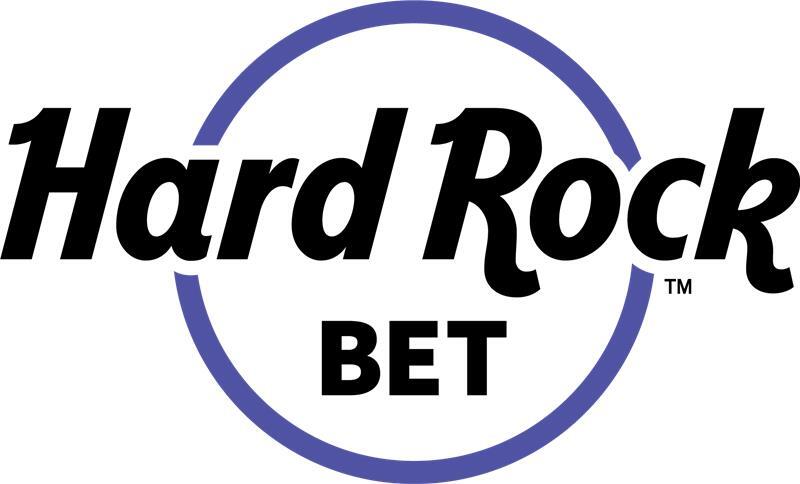D’Alembert Blackjack System
The D’Alembert blackjack system is a straightforward staking method in which players adjust their bets based on the outcome of wins or losses. After every losing hand,…
Category Ratings
This page contains references to products from one of our advertisers. We may receive compensation when you click on links to those products. Terms apply to the offers listed on this page. For an explanation of our Affiliate Policy, visit this page.
This creates a mild, linear form of negative progression that avoids the aggressive doubling seen in systems like the Martingale. Because it increases bets more slowly than Martingale, the D’Alembert system is generally less likely to deplete a bankroll quickly during short sessions.
In 2025, many U.S. players are drawn to this approach because it strikes a balance between structure and caution without requiring significant capital. It’s easy to track, doesn’t rely on long winning streaks, and works well for those who prefer control over aggressive recovery strategies.
At a glance: A medium variance system best suited to six or eight deck blackjack tables with $5–$100 limits and a recommended bankroll of 40–50 betting units.
Core Principles of the D’Alembert System
- Starting point: Choose a base betting unit (e.g., $2).
- After every loss: Add +1 unit to your next bet (e.g., from $2 → $4).
- After every win: Subtract 1 unit from your next bet (but never below the base unit).
- Objective: Reach a balance where the number of wins equals the number of losses, resulting in a net profit of one unit per cycle.
Progression Behavior & Reset Guidelines
During long losing streaks:
- Stakes increase gradually, unlike the sharp jumps in Martingale.
- Slower growth means lower risk of hitting table limits.
- Easier to manage for players with modest bankrolls.
When to reset to the base unit:
- After achieving net equilibrium (equal number of wins and losses).
- Upon reaching a pre-set win/loss threshold (e.g., +5 units or –10 units).
- At a fixed time or hand count, regardless of outcome, to preserve discipline.
Historical & Mathematical Background
Jean le Rond d’Alembert’s 18th-century “equilibrium of chance” proposed that losses make future wins more likely. Today, we know each blackjack hand is independent—past outcomes don’t influence future ones.
The house edge stays fixed, meaning no staking pattern can overcome it. Even when adding or subtracting one unit per hand, the long-term expected loss remains the same.
EV = (House Edge) × (Total Stake)
For a 0.5% edge, that means –0.50% over time, no matter the progression.
Table Requirements & Optimal US Set-Up
The D’Alembert system works best on standard six or eight-deck blackjack tables where the dealer stands on soft 17 (S17), commonly found in U.S. live dealer rooms and regulated land-based casinos.
Online tables typically offer stakes from $5 to $1,000, while retail casino floors (like those in Atlantic City or Las Vegas) may range from $10 to $5,000. Avoid any tables with a 6:5 blackjack payout, as these significantly reduce long-term returns.
Progression systems, such as D’Alembert, are legal to use in all U.S. jurisdictions with regulated gambling. All licensed operators are required to follow strict Know Your Customer (KYC) procedures.
Players must verify their identity via email or SMS, and in some cases, provide proof of address and a copy of a government ID before placing real-money bets.
Step-by-Step Walk-Through With Annotated Bet Tracker
| Hand | Result | Stake | Net Session Balance |
| 1 | Loss | $2 | −$2 |
| 2 | Loss | $4 | −$6 |
| 3 | Win | $6 | 0 |
| 4 | Loss | $4 | −$4 |
| 5 | Win | $6 | +$2 |
| 6 | Win | $4 | +$6 |
Follow these steps to get started safely and legally at a regulated online casino in the U.S.:
1. Verify the U.S. License
Scroll to the footer of the casino’s homepage. Look for a valid license from a state regulator (e.g., NJDGE, MGCB, PGCB). Avoid unlicensed or offshore operators.

2. Complete Registration + Verify Account
Fill out the sign-up form (name, email, DOB, etc.). Verify your account via email or SMS. Upload a copy of your driver’s license or proof of address if requested.

3. Choose a No-Wagering Bonus
Visit the promotions page. Select a blackjack-friendly no-wagering bonus, if available. Carefully read the Terms and Conditions to confirm that you can play blackjack with bonus funds and that it has a high clearance rate.
4. Deposit via a U.S.-Accepted Method
Use a qualifying payment option, such as Visa Debit, PayPal, Play+, or Skrill. Ensure your deposit meets the minimum bonus criteria and opt in if required.

5. Play Games
Once the bonus is active, you are ready to play. Use bonus funds and real money to explore casino games. Remember to fulfill any wagering requirements so you can withdraw your winnings.

Bankroll Planning & Stop-Loss Rules
To use the D’Alembert system responsibly, follow this simple bankroll formula:
Bankroll = Base Unit × 50
Example:
Base Unit: $2
Bankroll: $2 × 50 = $100
Set These Before Your Firsthand:
Stop-Loss: 20 units → e.g., $40
Stop-Win: 10 units → e.g., $20
Once you reach either limit, walk away.
These thresholds prevent emotional chasing and help protect your bankroll across multiple sessions.
Variations & Tweaks Popular in the US
Experienced players utilize variations of the D’Alembert Blackjack strategy below, based on various factors, such as table limits and whether they prefer casual or more strategic gaming sessions.
Reverse D’Alembert
How it works: Increase 1 unit after a win, decrease after a loss.
Pros: Maximizes hot streaks.
Cons: Risky in losing runs; can spiral quickly without wins.
Best for: Confident players chasing streaks on mid/high-limit tables.
Half Unit D’Alembert
How it works: Follows the same logic but uses 0.5 unit increments.
Pros: Smoother bankroll curve, lower session volatility.
Cons: Slower loss recovery.
Best for: Casual mobile users or tables with budgets of $1–$2, where longevity is a priority.
Tiered Reset
How it works: After three wins, reset stake to half the highest point reached.
Pros: Locks in partial profit, limits risk exposure.
Cons: Slows comeback if reset too early.
Best suited for: Strategic players managing long sessions or dealing with varied volatility.
Each variation offers trade-offs in recovery pace, risk, and complexity—choose based on your tolerance and table limits.
How Does D’Alembert Compare With Other Systems?
Review how D’Alembert compares with other blackjack systems below and consider how you could use other strategies in blackjack play.
D’Alembert vs Martingale
Martingale doubles your stake after each loss, making recovery faster—but also increasing the risk. D’Alembert increases by just one unit, reducing bust potential but slowing the rate of profit recovery.
Explore the Martingale System.
D’Alembert vs Fibonacci
Fibonacci uses a sequence (1, 1, 2, 3, 5…) that escalates stakes more sharply after losses. D’Alembert sticks to a flat +1/-1 pattern, making it simpler and more conservative.
See the Full Fibonacci System Guide.
D’Alembert vs Labouchere
Labouchere follows a written number line, summing ends for each stake. It offers flexible goals but escalates quickly when losing streaks occur. D’Alembert is easier to follow and more suitable for beginners.
Read the Labouchere System Overview.
D’Alembert vs Oscar’s Grind
Oscar’s Grind increases bets only after wins to secure a one-unit profit. It’s slower and safer than D’Alembert, which adjusts after every hand.
Quick Comparison
| System | Growth Rate | Bankroll Need | Bust Risk |
| D’Alembert | Slow | Moderate | Low |
| Martingale | Fast | High | High |
| Fibonacci | Moderate | High | Medium |
| Labouchere | Variable | High | Medium |
| Oscar’s Grind | Very Slow | Low–Moderate | Very Low |
Ideal US Casinos & Live Studios to Practice
Join one or all of the top-rated live casinos below to play blackjack and practice the D’Alembert strategy.
Caesars Casino
Caesars offers six- and eight-deck live blackjack with S17 rules and ~70–75% penetration. Bets range from $5 to $1,000, accommodating both casual and mid-stakes players.
DraftKings Casino
DraftKings features live six-/eight-deck S17 blackjack with around 70% penetration. Betting limits average from $5 to $2,500, suitable for structured play. Though La Partage is absent, cashback and loyalty rebates are regularly offered through their rewards system, helping offset streak-driven swings.
Hard Rock Bet Casino
Hard Rock Bet delivers eight-deck live blackjack with S17 rules and ~75% penetration. Stakes average from $5 to $1,500, making it well-suited for progression systems. While La Partage tables are not included, earned loyalty points and bonus credits help cushion session variance.
Common Misconceptions & Pitfalls
A common myth is that “wins will balance losses,” but each blackjack hand is independent—there’s no guarantee of correction. Raising your base unit mid-session also disrupts the system and increases risk, especially after emotional swings.
Impatience often leads players to abandon their stop-loss rules, causing them to chase losses instead of sticking to their plan.
Avoid these pitfalls:
- Don’t expect short-term balance.
- Stick to your original unit size.
- Never override stop-loss or stop-win thresholds.
Discipline, not luck, is what makes the D’Alembert system manageable.
Tips & Tricks for Getting Started With D’Alembert
- Master basic blackjack strategy before using the D’Alembert system.
- Practice the system in demo mode to build familiarity without risking money.
- Track every hand in a spreadsheet to monitor bets, outcomes, and bankroll changes.
- Avoid blackjack tables with 6:5 payouts; stick to 3:2 payout games for better odds.
- Never combine the system with side bets, which have higher house edges.
- Move to real money play only after disciplined logging shows consistent understanding and control.
- Once confident, consider using a roulette or blackjack bonus from our operator to help reduce variance and extend play.
Other Applications of D’Alembert
The D’Alembert progression works well beyond blackjack, applying effectively to even-money bets in roulette, such as red or black, or odd or even. It’s also suitable for flat betting strategies in blackjack.
For a detailed breakdown on roulette, see our D’Alembert Roulette page.
The same bankroll management principles apply across both games. However, remember that advantages like card counting in blackjack are independent of the betting progression and should be considered separately from staking strategies.
Responsible Gaming
Safer gambling begins with setting a fixed budget and sticking to it—never bet more than you can afford to lose. Use tools like time-outs and self-exclusion to take breaks or pause play if needed.
Remember, no betting system can overcome the house edge, so chasing losses is a major red flag that often leads to bigger problems. Staying disciplined and aware is key to enjoying gaming responsibly.
For help and guidance, visit trusted US resources like the National Council on Problem Gambling and call 1-800-GAMBLER. Also, check out our site’s comprehensive Responsible Gambling guide for tips and support options to keep your play safe and enjoyable.
Main Takeaways
The D’Alembert system is a simple linear progression strategy that increases bets by one unit after a loss and decreases by one unit after a win. It’s less aggressive than Martingale, offering steadier pacing and lower drawdown risk.
To stay in control, players should stick to their base unit, use a 40–50 unit bankroll, and only play at tables with fair rules like 3:2 blackjack or single-zero roulette.
Importantly, no staking plan can overcome the built-in house edge.
Quick Summary:
- Add 1 unit after a loss, subtract one after a win
- Never go below your base unit
- Use 40–50 units as a bankroll cushion
- Stick to even-money bets only
- Avoid side bets and 6:5 blackjack payouts
- Ideal for low- to mid-risk players
- Always set a stop loss and stop win
- Systems do not beat the house edge
- Track each hand or spin to stay disciplined
- Use bonuses to reduce variance responsibly
FAQs:
What is the basic staking rule in the D’Alembert system?
Increase your bet by one unit after a loss and decrease by one unit after a win, never going below the base stake.
How many betting units should I start with for a low-risk session?
At least 40 to 50 units are recommended to withstand moderate losing streaks.
Does the system work better on red/black or odd/even wagers?
It performs equally across all even-money bets, as the odds and payouts are the same.
How is Reverse D’Alembert different from the standard progression?
Reverse D’Alembert increases the stake after a win and decreases it after a loss.
What happens if I hit the table’s maximum stake before a win occurs?
If you hit the table max before a win, your progression fails, and losses become locked in.
Can I combine D’Alembert with “La Partage” tables to cut losses?
Yes, La Partage halves losses on zero, improving long-term outcomes.
Is the system suitable for Lightning or Quantum roulette with multipliers?
No, the high variance of multipliers clashes with D’Alembert’s even-money focus.
Do online casinos allow auto bet scripting for D’Alembert sequences?
Most licensed casinos prohibit scripting or automation due to fairness policies.
Will using this system breach bonus wagering or max bet terms?
It can, but only if bet sizes exceed the maximum bonus limits—always check the Terms and Conditions.
How do I know when to reset the progression or walk away?
Reset after a net profit, hitting your stop loss, or reaching a fixed session time.
Does long-term play with D’Alembert change the house edge?
No, the house edge remains fixed regardless of betting pattern or system.
For almost two decades, Sadonna has remained at the forefront of the gambling industry in the US and abroad, covering the latest news and legal updates. Sadonna’s goal is to provide sports bettors and casino players with premium content, including comprehensive details on the US industry.













